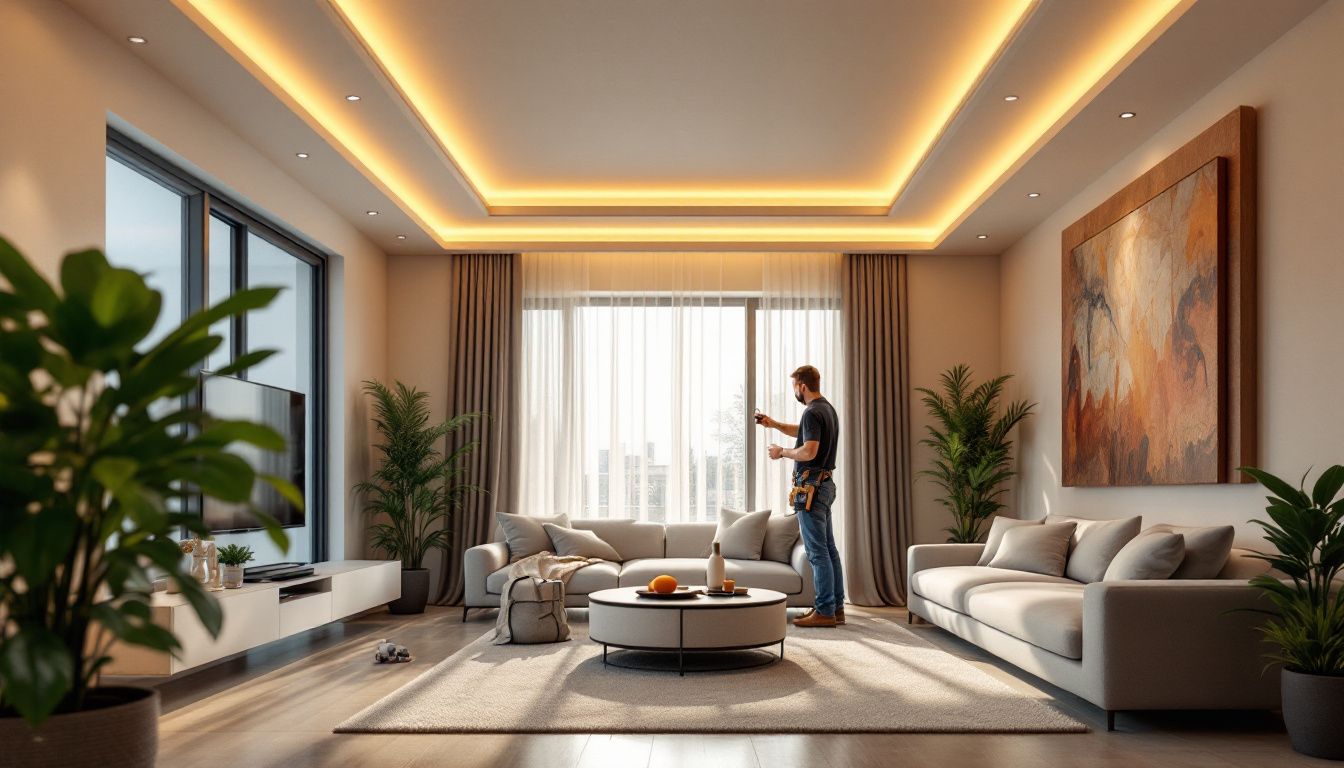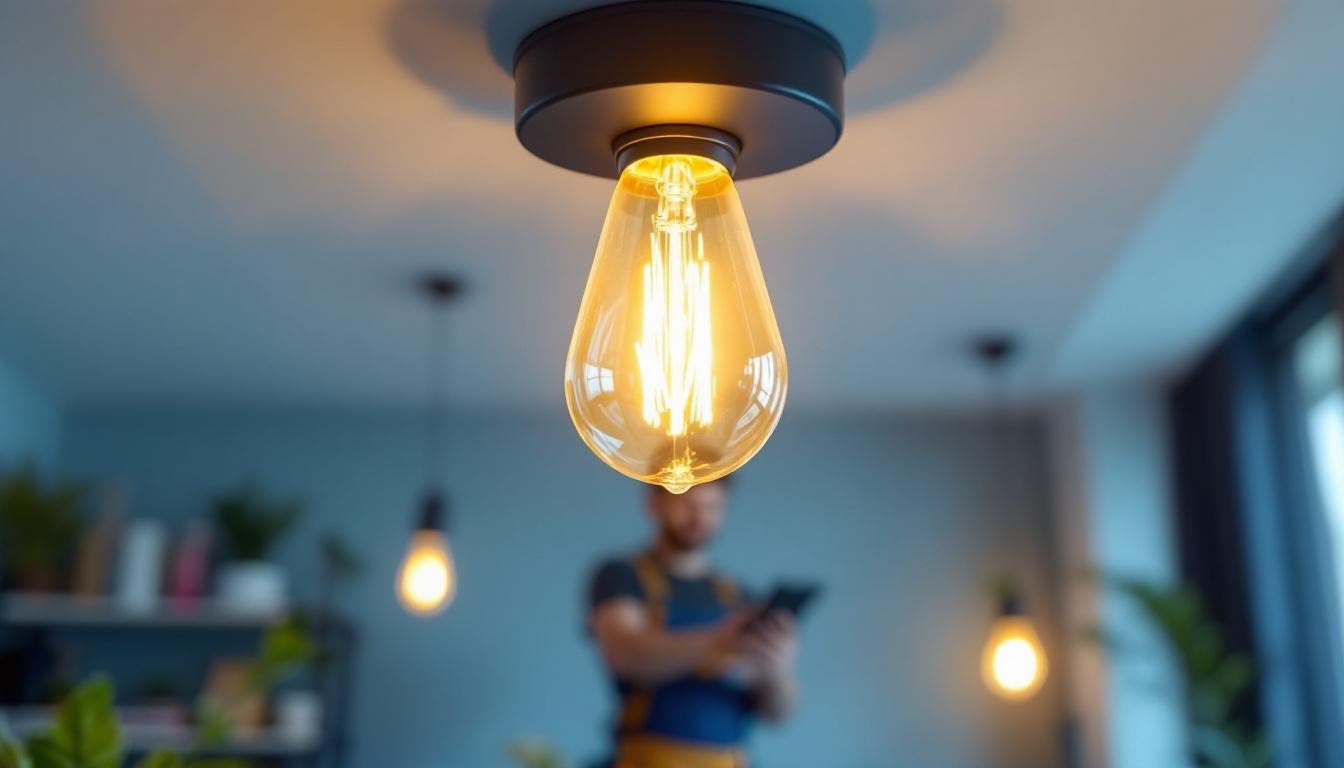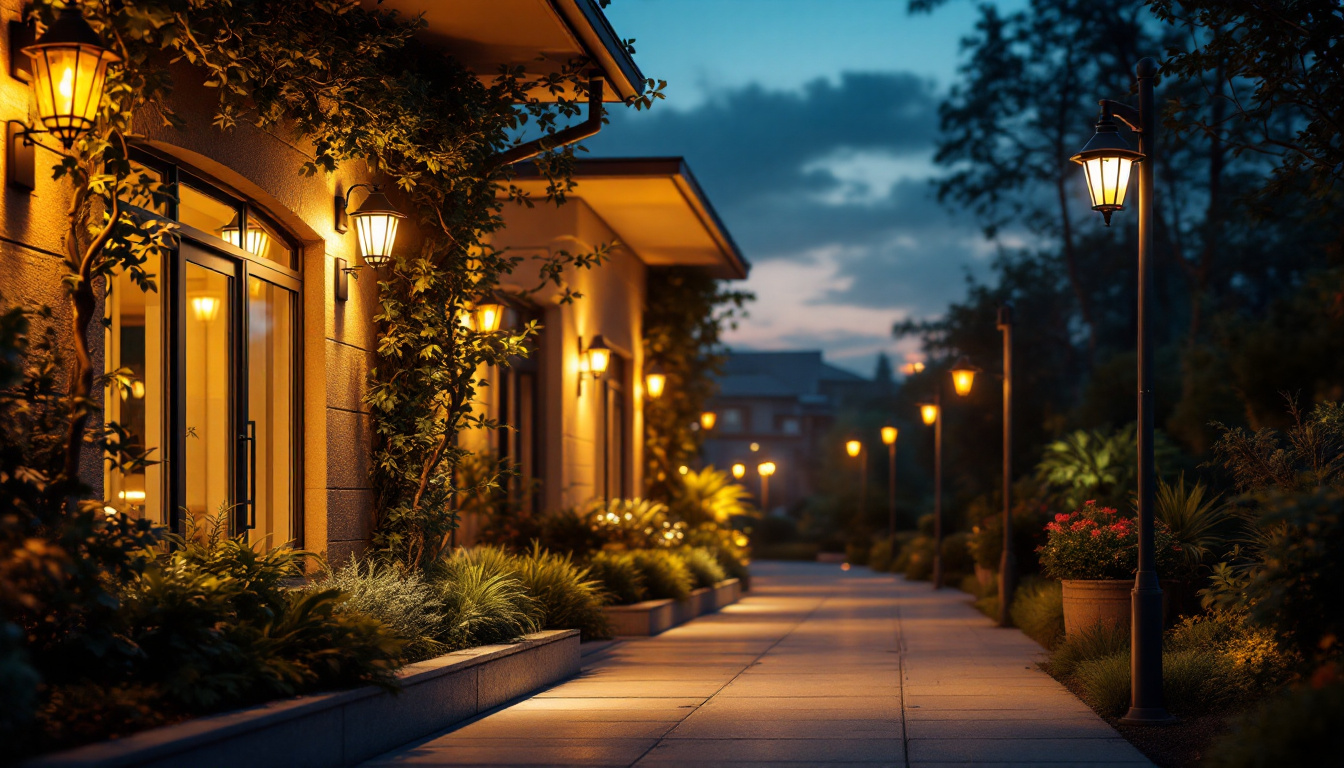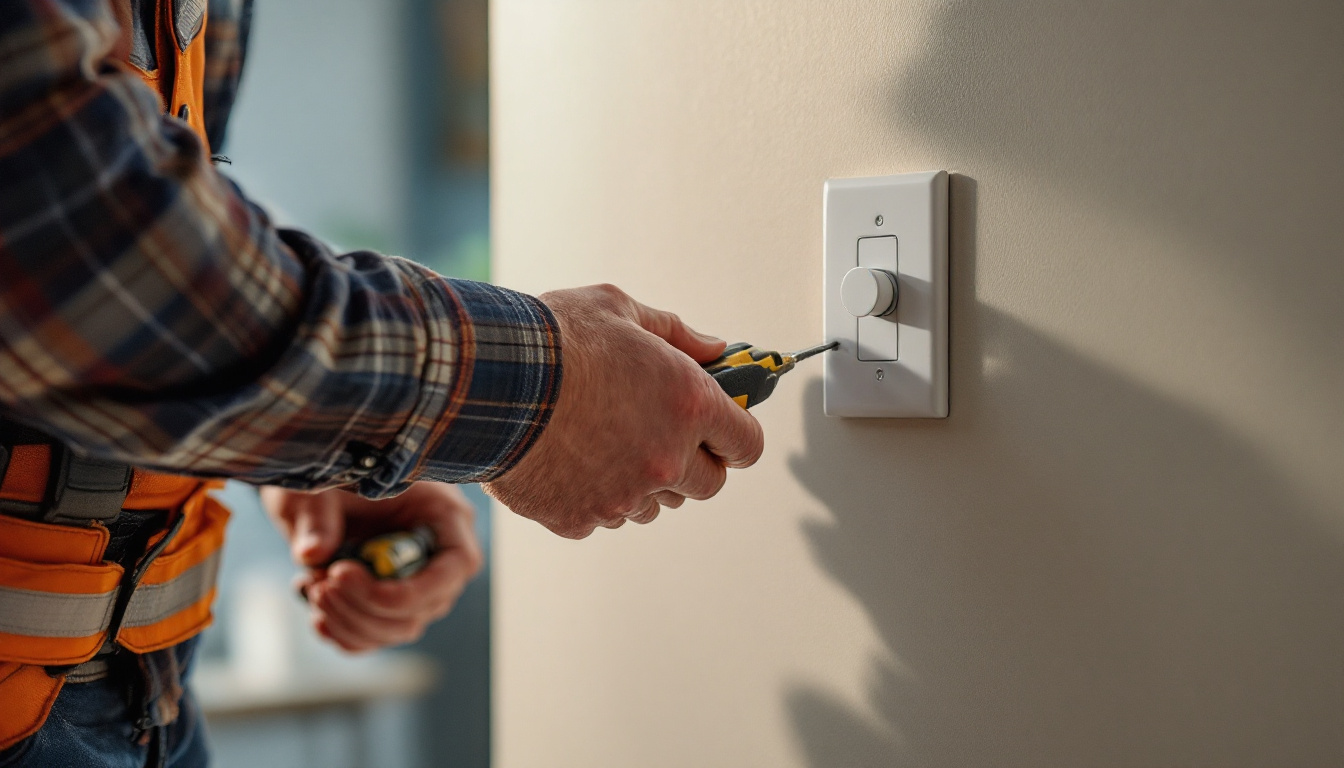
In the ever-evolving world of lighting design, recessed ceiling lights have emerged as a staple for both residential and commercial spaces. Their sleek appearance and versatility make them a popular choice among homeowners and business owners alike. For lighting contractors, understanding the nuances of recessed lighting can lead to enhanced project outcomes and increased client satisfaction.
Recessed ceiling lights, often referred to as can lights or pot lights, are fixtures that are installed into a hollow opening in the ceiling. Unlike traditional light fixtures that hang down, recessed lights are flush with the ceiling, providing a clean and unobtrusive look. This design not only maximizes headroom but also allows for more creative lighting solutions. The sleek appearance of recessed lights makes them an ideal choice for modern interiors, where minimalism and simplicity are often key design elements.
Moreover, the installation of recessed lights can significantly alter the perception of space in a room. By strategically placing these fixtures, homeowners can create the illusion of a larger area, as the absence of hanging fixtures draws the eye upward. This effect is particularly beneficial in smaller rooms or spaces with low ceilings, where traditional lighting might feel overwhelming or intrusive.
There are several types of recessed lights available, each serving distinct purposes. The most common types include:
In addition to these common types, there are also specialty recessed lights, such as those designed for specific applications like art lighting or accentuating architectural features. These fixtures often come with adjustable beams or color temperature options, allowing for tailored illumination that highlights the unique aspects of a room.
Recessed lighting offers numerous advantages that can enhance the overall aesthetic and functionality of a space. Some of the key benefits include:
Furthermore, recessed lighting can contribute to energy efficiency, especially when paired with LED bulbs. These energy-efficient options not only reduce electricity consumption but also have a longer lifespan compared to traditional incandescent bulbs. This means less frequent replacements and lower maintenance costs, making recessed lighting a smart investment for both aesthetics and practicality.
For lighting contractors, successfully integrating recessed ceiling lights into projects requires careful planning and consideration. Understanding the specific needs of each client, as well as the technical aspects of installation, is crucial for achieving optimal results.
Before selecting recessed lighting options, it is essential to engage with clients to understand their preferences and requirements. Factors such as the intended use of the space, desired ambiance, and aesthetic preferences should guide the selection process. For instance, a client may prefer warm white light for a cozy living room, while a brighter, cooler tone may be more appropriate for a home office. Additionally, discussing the potential for dimmable options can enhance versatility, allowing clients to adjust lighting levels based on the time of day or specific activities, such as entertaining guests or enjoying a quiet evening with a book.
Proper placement and spacing of recessed lights are critical for achieving balanced illumination. A common rule of thumb is to space fixtures approximately 4 to 6 feet apart, depending on the ceiling height and the wattage of the bulbs used. Additionally, contractors should consider the layout of the room and any architectural features that may influence light distribution. For example, in a kitchen with an island, strategically placing recessed lights above the workspace can provide focused illumination for cooking and food preparation. Furthermore, incorporating layers of light by combining recessed fixtures with other lighting types, such as pendant lights or under-cabinet lighting, can create a more dynamic and functional environment.
The trim and bulb selection can significantly impact the performance and appearance of recessed lighting. Trims come in various styles, including baffle, reflector, and adjustable options. Each trim type can alter the light distribution and aesthetics of the space. Similarly, selecting the appropriate bulb—whether LED, incandescent, or halogen—will affect energy efficiency and brightness levels. It is also worth noting that LED bulbs have advanced significantly in recent years, offering a wide range of color temperatures and dimming capabilities, making them an increasingly popular choice among homeowners. Additionally, contractors should educate clients on the benefits of smart lighting solutions, which can provide enhanced control over lighting settings and integrate seamlessly with home automation systems, ultimately elevating the overall user experience.
Installing recessed ceiling lights requires a blend of technical skill and attention to detail. Following best practices can ensure a successful installation that meets both safety standards and client expectations.
Before installation, it is essential to assess the electrical system and ensure it can support the additional load of recessed lighting. Contractors should verify that the circuit is properly rated and that there are no existing issues that could lead to complications during installation.
When cutting holes for recessed lights, precision is key. Using a template can help ensure uniformity in hole size and placement. Additionally, contractors should be cautious of any existing wiring or plumbing that may be hidden within the ceiling.
Once the holes are cut, securing the fixtures properly is vital for safety and performance. Many recessed lights come with mounting clips or brackets that should be installed according to the manufacturer’s guidelines. Ensuring a snug fit will prevent any movement or shifting over time.
As energy efficiency becomes increasingly important, recessed lighting presents an opportunity for contractors to promote sustainable practices. By selecting energy-efficient fixtures and bulbs, contractors can help clients reduce their energy consumption and lower utility bills.
LED recessed lights have gained popularity due to their longevity and energy efficiency. Unlike traditional incandescent bulbs, LEDs consume significantly less energy and have a longer lifespan, making them a cost-effective choice in the long run. Additionally, many LED options are now available in various color temperatures, allowing for customization to suit client preferences.
Integrating smart technology into recessed lighting systems can further enhance energy efficiency. Smart bulbs and controls allow clients to adjust brightness levels, set schedules, and even control lighting remotely via smartphone apps. This not only improves convenience but also encourages energy-saving habits.
Building strong relationships with clients is essential for the success of lighting contractors. By providing exceptional service and demonstrating expertise in recessed lighting, contractors can foster trust and encourage repeat business.
Clear and open communication is vital throughout the project lifecycle. Contractors should keep clients informed about timelines, progress, and any potential challenges that may arise. This transparency helps manage expectations and builds confidence in the contractor’s abilities.
Offering post-installation support can set a contractor apart from competitors. Providing guidance on maintenance, troubleshooting, and even offering warranties can enhance the overall client experience. This support not only reinforces the contractor’s commitment to quality but also encourages positive referrals.
To maximize success, lighting contractors must effectively market their recessed lighting services. A well-rounded marketing strategy can attract new clients and showcase the contractor’s expertise in this specialized area.
Creating a portfolio of completed projects featuring recessed lighting can serve as a powerful marketing tool. High-quality images and detailed descriptions of each project can demonstrate the contractor’s skills and versatility. This portfolio can be shared on websites, social media platforms, and during client consultations.
Providing educational content related to recessed lighting can position contractors as industry experts. Blog posts, videos, and informational guides can help clients understand the benefits and options available, ultimately guiding them toward making informed decisions. This content can also improve search engine visibility, attracting more potential clients.
Recessed ceiling lights present a wealth of opportunities for lighting contractors looking to enhance their service offerings. By understanding the intricacies of recessed lighting, from selection and installation to energy efficiency and client relationships, contractors can maximize their success in this competitive market. Embracing these strategies not only leads to satisfied clients but also positions contractors as trusted experts in the field of lighting design.
Ready to elevate your lighting projects with the sleek appeal of recessed ceiling lights? At LumenWholesale, we’re committed to providing lighting contractors with the highest quality, spec-grade lighting solutions at unbeatable wholesale prices. Say goodbye to local distributor markups and hello to a vast selection of reliable, high-performance lighting that meets the strictest industry standards. With the added benefits of free shipping and bulk buying simplicity, your search for premium lighting at the best value ends here. Don’t compromise on quality or cost—visit LumenWholesale now and discover the ideal blend of quality, affordability, and convenience for all your lighting needs.

Discover the top advantages of light bulb ceiling fixtures for lighting contractors.

Discover expert insights and top recommendations for outdoor security lighting in this comprehensive guide tailored for lighting contractors.

Discover the essential guide to outdoor wall lights for houses, tailored for lighting contractors.

Discover the essential steps for installing a Leviton Decora single pole dimmer and learn how to avoid common pitfalls made by lighting contractors.